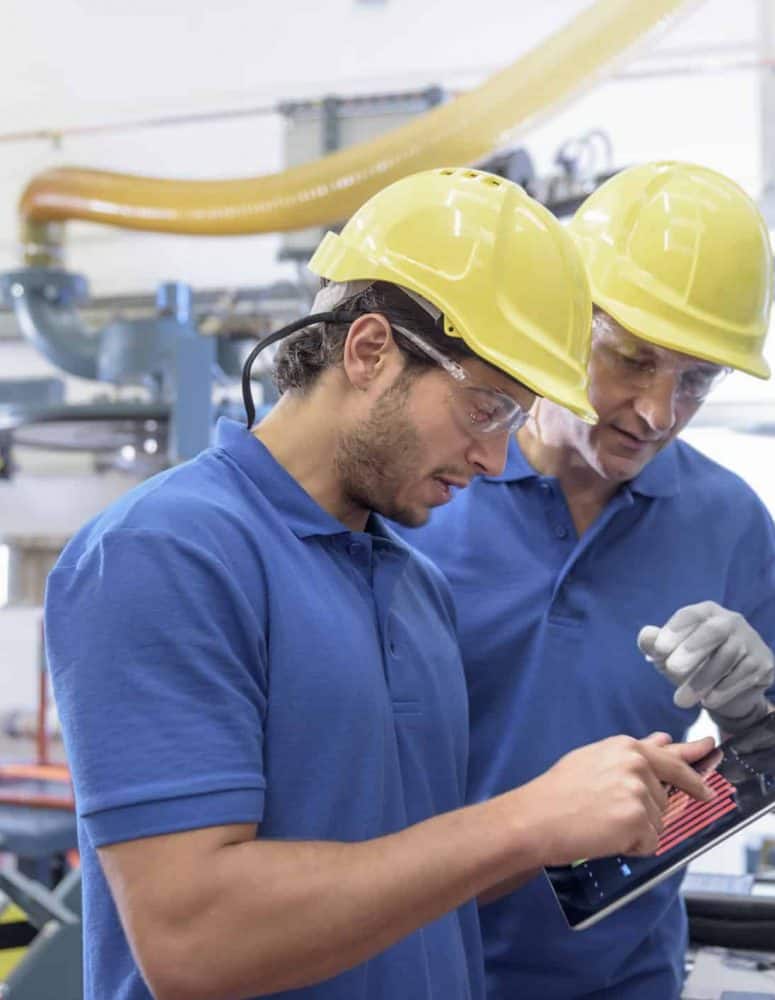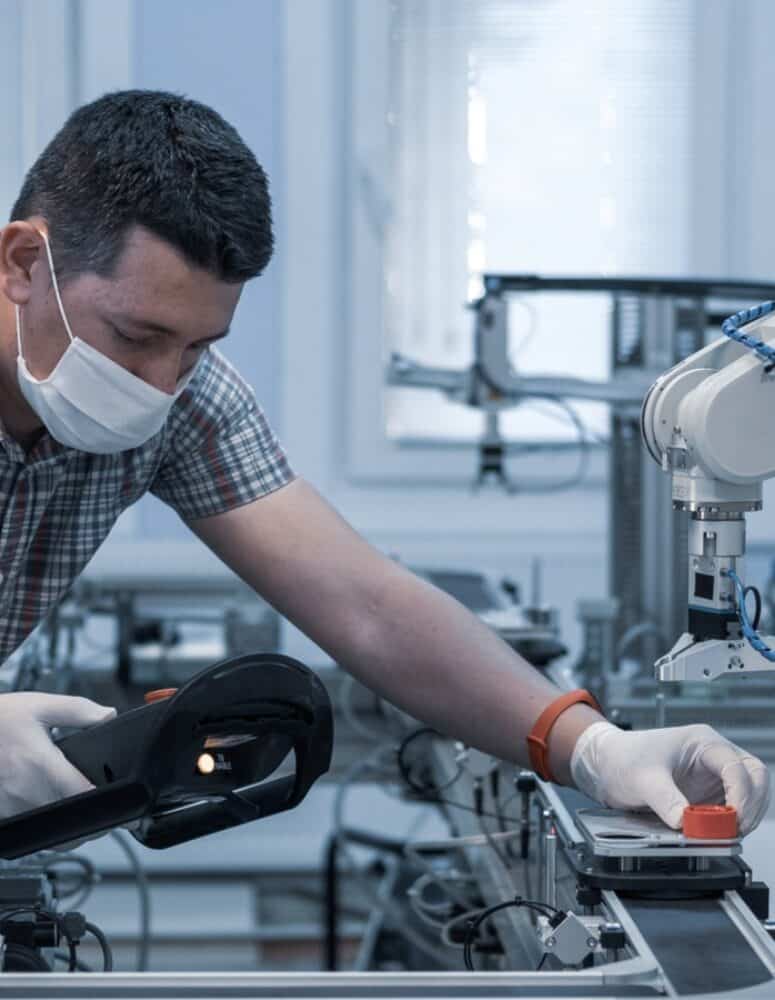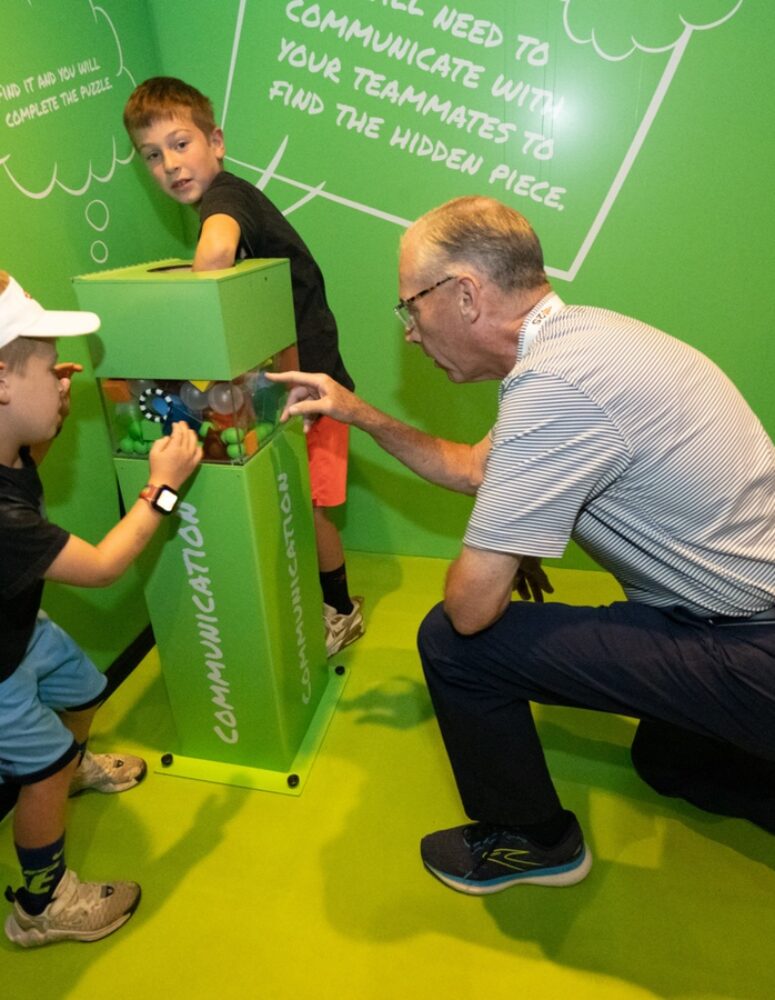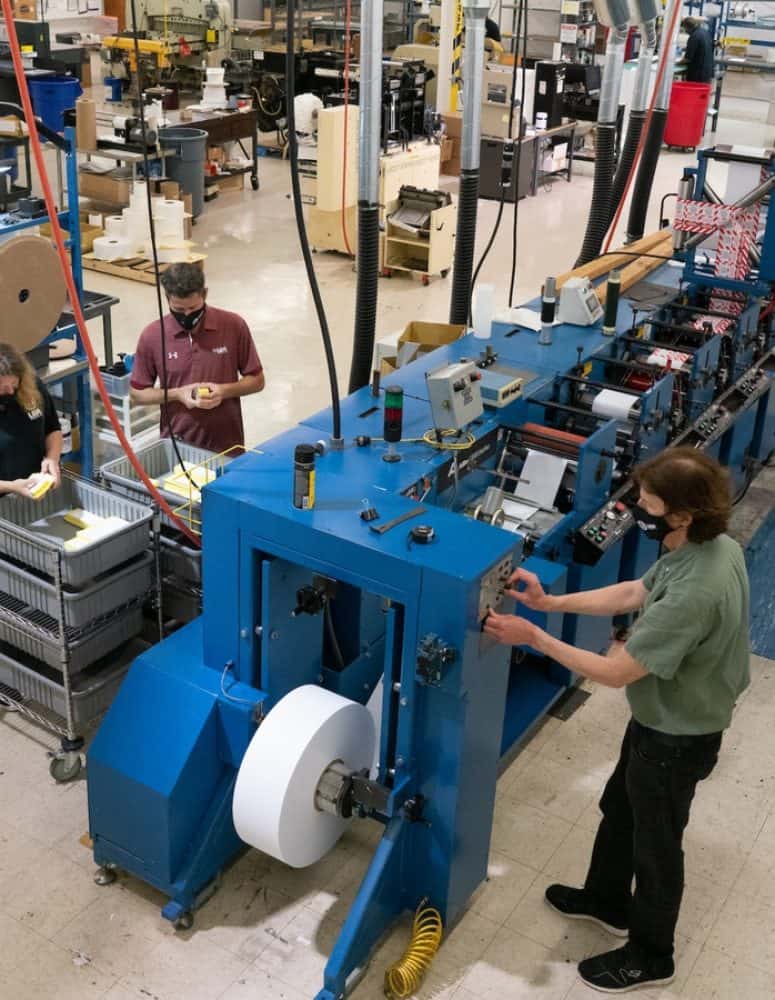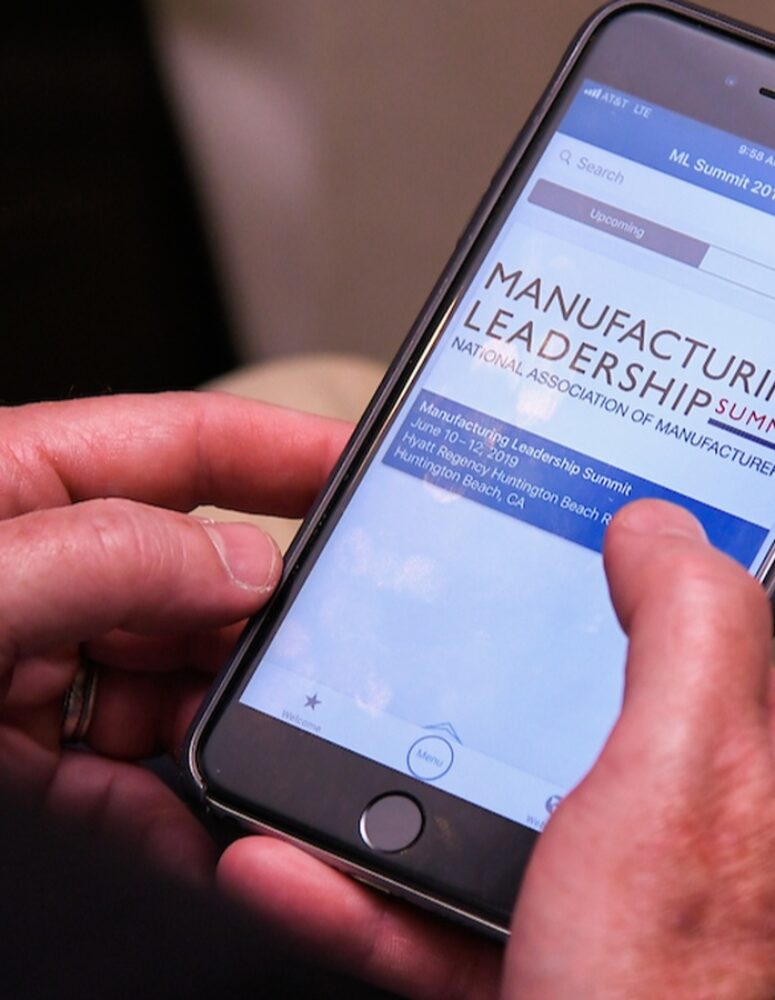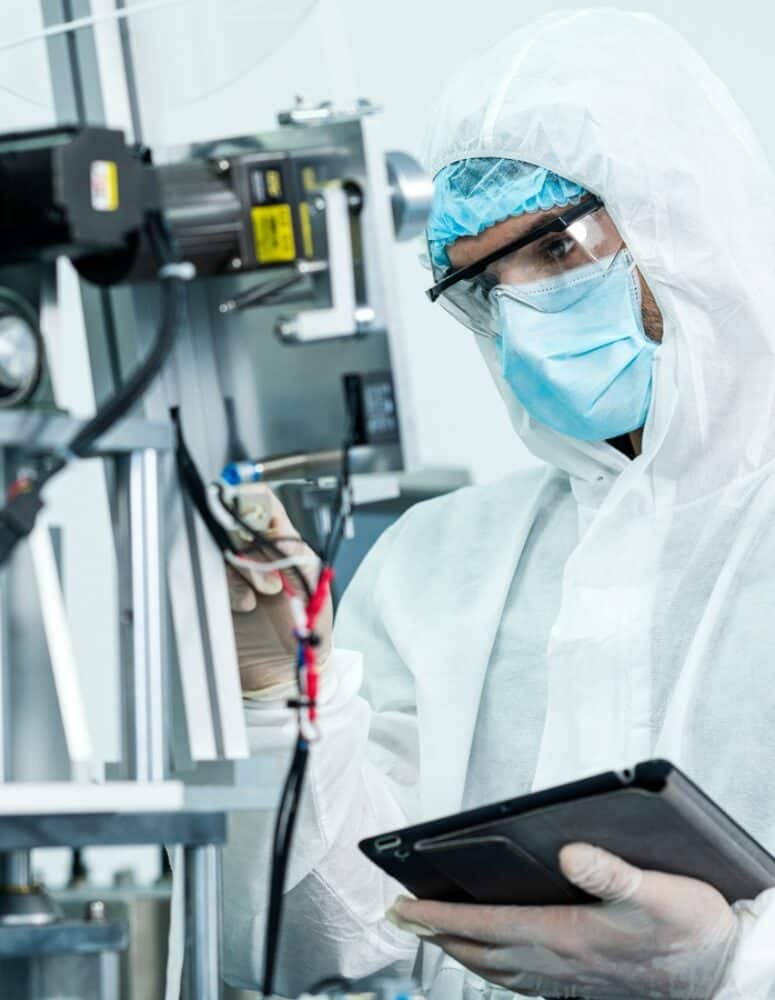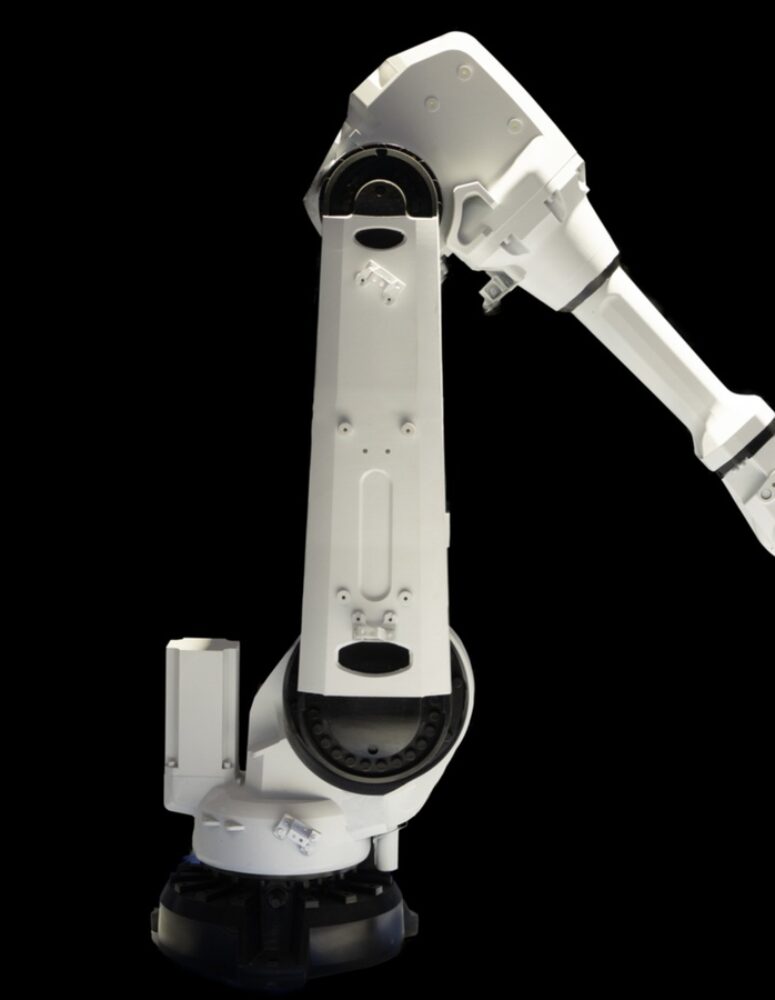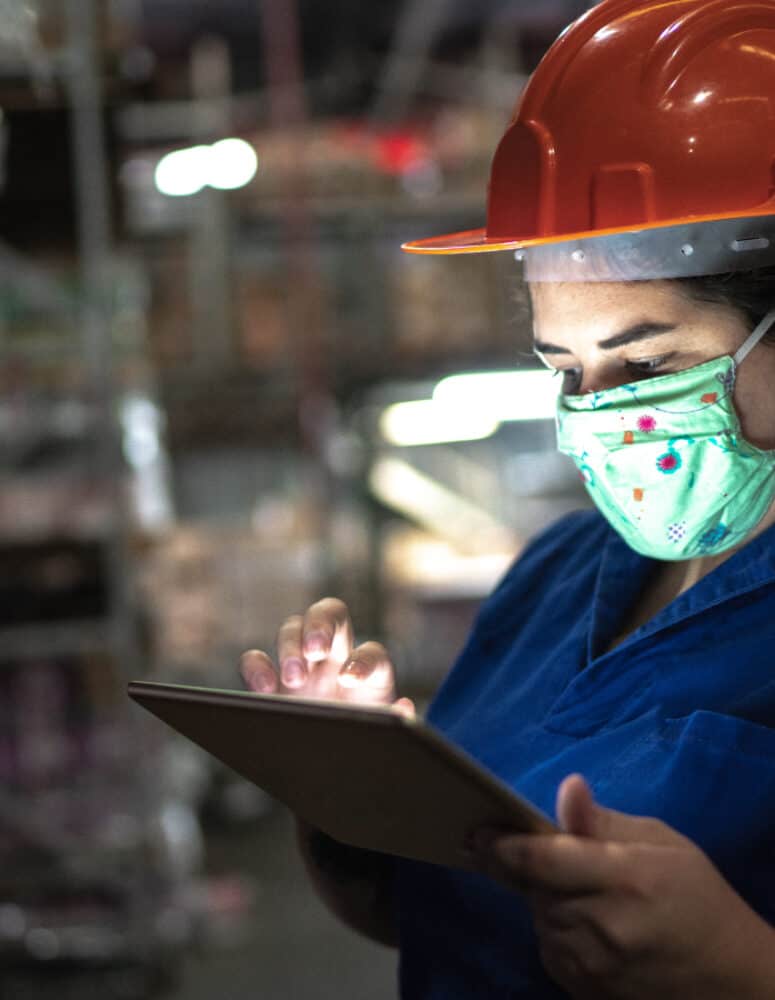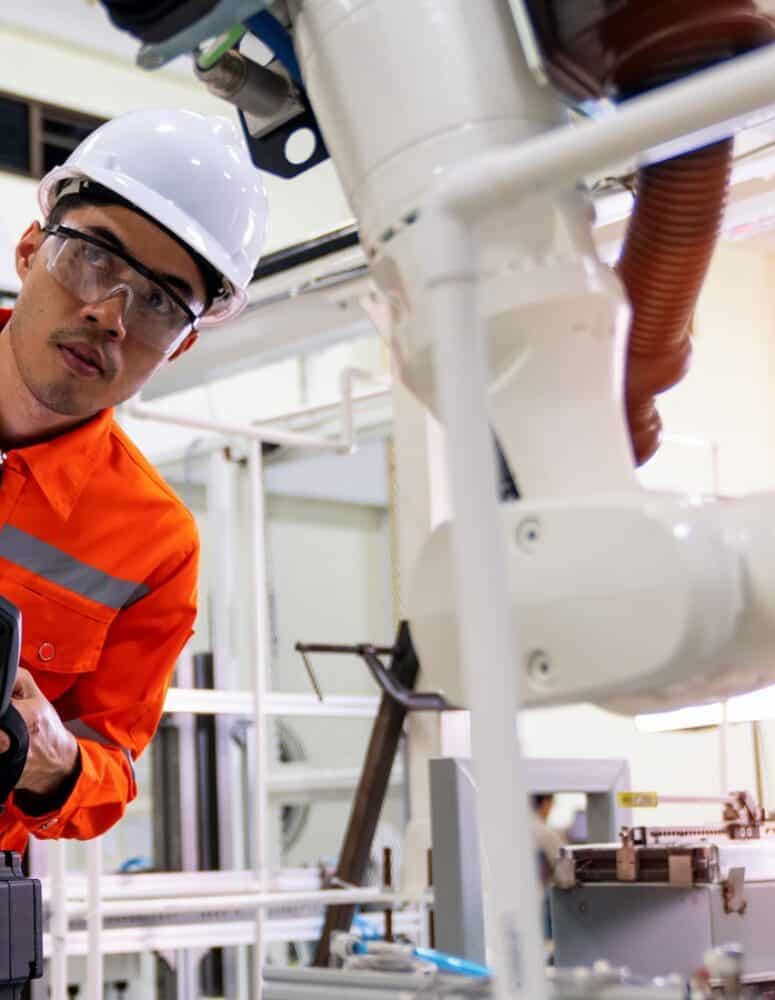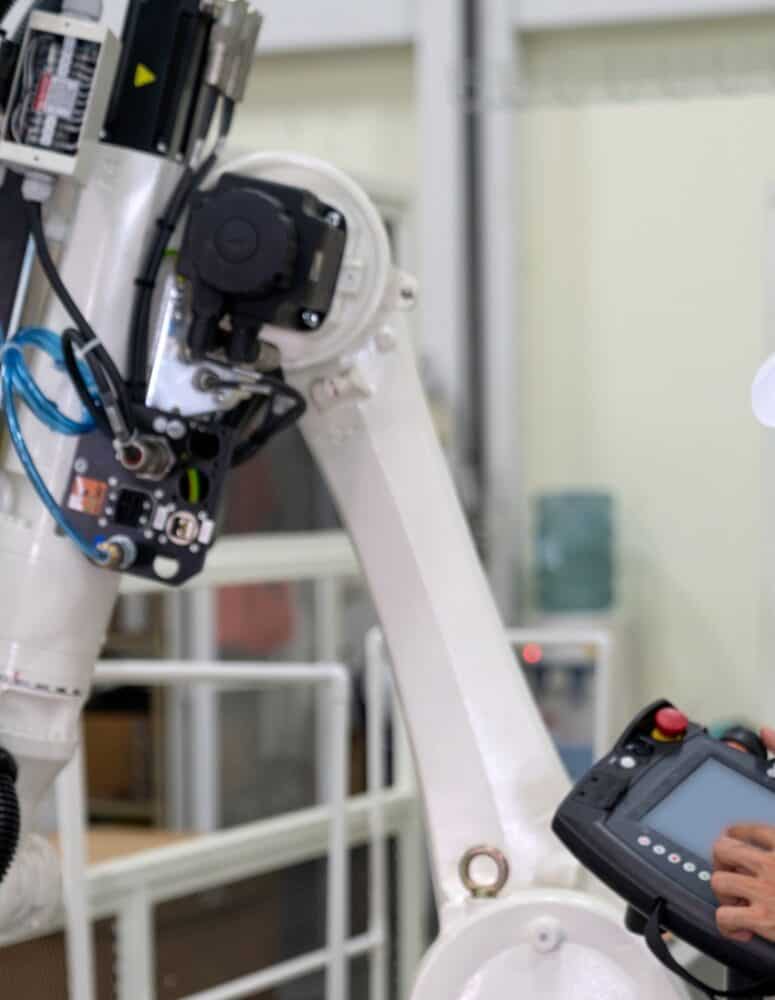The Top 8 Manufacturing Trends for 2023
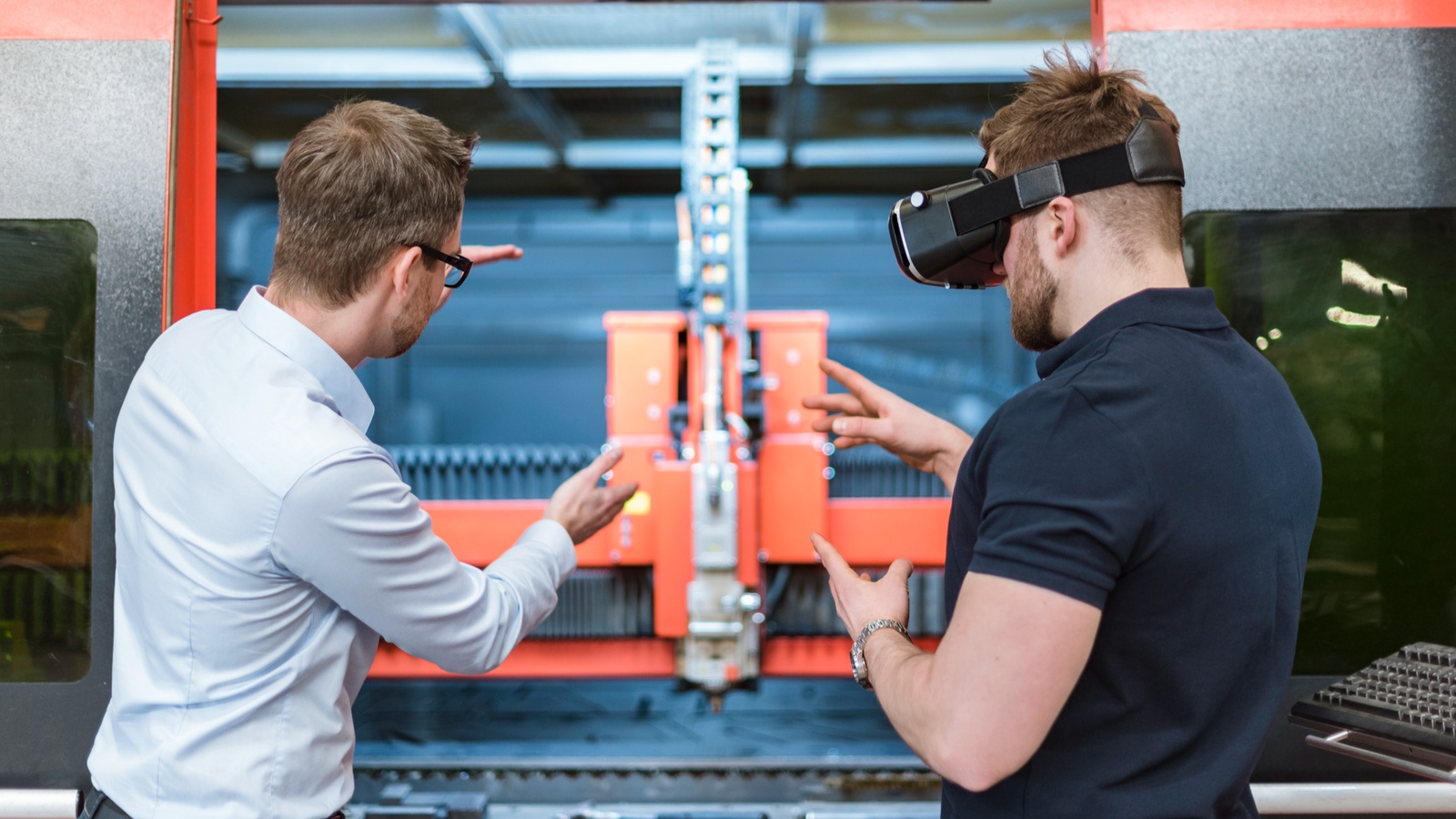
The NAM recently released its Top 8 Manufacturing Trends for 2023—a guide to the opportunities ahead and the resources that the NAM can offer. Here is what to look out for this year and beyond.
Advanced and emerging technology: Manufacturers are investing in a multitude of new technologies, including artificial intelligence, virtual reality, machine learning and more. Automation and robotics are enhancing workers’ abilities but will also require many more high-skilled employees. Though the workforce shortage is a challenge, digital technologies will help manufacturers become more resilient, efficient and profitable.
- NAM resources: How do you maximize these opportunities? The NAM has resources for you, including the Manufacturing Leadership Council (the NAM’s digital transformation arm), the Innovation Research Interchange (the NAM’s innovation division) and the MLC’s Manufacturing in 2030 Project.
Supply chain resilience: As manufacturers face long lead times, increased costs and a scarcity of raw materials, they are taking steps to boost supply chain resilience through reshoring, cybersecurity, increased supplier pools and more.
- NAM resources: Manufacturers can benefit from resources like CONNEX Marketplace, which helps connect nearby manufacturers and suppliers; the NAM’s Supply Chain Hub—a continually updated collection of webinars and policy documents focusing on supply chain issues; and useful case studies highlighting best practices.
Talent disruptions and opportunities: Manufacturers are confronting a range of challenges around the workforce, including labor shortages and skills gaps, while also figuring out how to take advantage of previously untapped talent pools.
- NAM resources: If you are searching for ways to enhance your employee benefits, The NAM Manufacturers Retirement 401(k) and Savings Plan offers manufacturing employees secure benefits for the future, while Innovation Management Workshops give manufacturing leaders the skills to build innovative and creative teams. Meanwhile, the Manufacturing Institute—the 501(c)3 nonprofit workforce development and education partner of the NAM—promotes a range of events and initiatives designed to expand and diversify the manufacturing workforce as a whole.
Cybersecurity: The threat from bad actors is real, and strong cybersecurity has become critical to manufacturing operations up and down the supply chain. At the same time, manufacturers will have to be on the lookout for new cybersecurity reporting requirements.
- NAM resources: The NAM can help, with support like the NAM’s complimentary Cyber Risk Assessment. NAM Cyber Cover offers cyber insurance and risk mitigation, and you can check out these videos from manufacturing executives laying out best practices for cybersecurity defenses.
Post-pandemic growth and expansion: Long-term goals shouldn’t be downgraded, despite an uncertain economy. Manufacturers should keep pursuing technological advances, navigate government incentives and stay open to mergers, acquisitions and other investments.
- NAM resources: The NAM Incentives Locator helps manufacturers find funds and tax credits to help their business, while the MLC offers networking opportunities for manufacturing leaders.
Tough economic outlook: There’s no doubt that manufacturers face economic headwinds. That means manufacturers need to look for ways to be nimble and responsive to changing realities and able to work more efficiently than ever.
- NAM resources: Tools like NAM Shipping & Logistics give manufacturers discounts on shipping and freight, while NAM Energy offers conversations with energy advisers who can help adjust energy use strategies. IRI Coffee Houses promote virtual conversations with innovation leaders to discuss new developments and opportunities.
Sustainability: Manufacturers are committed to strengthening operations and maintaining a healthy planet at the same time. More than ever, manufacturing companies are looking for ways to reduce carbon emissions.
- NAM resources: The NAM provides resources that can help manufacturers with innovating for sustainability, as well as rethinking end-of-life technology value. Manufacturers can also learn about how digital solutions drive sustainability in manufacturing.
Looking ahead to 2030: Changes in the manufacturing industry and in the world around us—from population growth to the rise of a new middle class to increased interconnectivity—have manufacturers planning for big changes in the next decade.
- NAM resources: The IRI offers a forum for manufacturers to connect with R&D leaders, while the MLC’s Next Phase of Digital Evolution report shows how manufacturing leaders can plan their long-term futures.
Learn more: Take a look at the full guide for more details and to find out more about the NAM resources that will help manufacturers deal with these key trends.
How Will AI Impact the Manufacturing Workforce?

AI is changing the way manufacturers do business—from the production line to the back office and across the supply chain. At the Manufacturing Leadership Council’s Manufacturing in 2030 Project: Let’s Talk about AI event last month in Nashville, Tennessee, panelists discussed how those sweeping changes would alter, and enhance, the manufacturing workforce.
A collaboration between the MLC (the NAM’s digital transformation arm) and the MI (the NAM’s 501(c)3 workforce development and education partner), the event provided key insights for manufacturers into how technology and workforce trends interact with each other. Here are a few key takeaways.
Net positive: “The history of technology adoption is about improving the job quality of individuals on the shop floor. AI helps them to do the job better, provide them with better tools, gives them greater authority and ultimately increases the value-add of their jobs. All of that is a net positive for those individuals,” said MI Vice President of Workforce Solutions Gardner Carrick.
- By leveraging data and enabling greater efficiency, AI will improve communication, increase collaboration across disciplines and stimulate innovation, according to the panel.
- In addition, “AI can even inform the workforce’s creativity by working with it to design a new product or system,” said Jacey Heuer, lead, data science and advanced analytics, Pella Corporation.
Skills needed: While you might expect that implementing AI requires workers skilled in programming, data science and machine learning, manufacturers will also need to expand their bench of critical thinkers and problem-solvers. The panelists had a few tips to help companies along.
- Invest in upskilling programs to make the AI integration process at your company smoother and develop the talent you already have.
- Update job descriptions to reflect the skill sets the company will need in the next five to seven years.
- Consider recruiting for and teaching adaptive skills—skills that enable individuals to adapt easily to changing demands and environments—which can increase the flexibility of your workforce.
- Build partnerships with local schools, community colleges and technical and vocational schools to develop talent pipelines that will meet your needs.
The human-AI collaboration: While AI will take over monotonous, repetitive tasks, the panelists predicted that the industry will continue to center around human labor.
- “You can teach AI to do X. You can teach AI to do Y. [However,] combining the two may be really difficult for AI, while a human can do it better. You’re going to continue to see humans in roles that center on making decisions and telling stories,” said Asi Klein, managing director, industrial products and organization transformation, Deloitte Consulting.
- Meanwhile, AI adoption will likely lead to an increase in available jobs, as more skilled workers will be needed to guide and inform these new processes.
The last word: “Over the last 12 years, we’ve seen a lot of technology adoption, but we have not seen a lot of job loss. In fact, we’ve seen job gains,” said Carrick. “There is a lot of opportunity to reimagine jobs to add value that AI will help to illuminate.”
How Digital Manufacturing Creates Business Opportunities
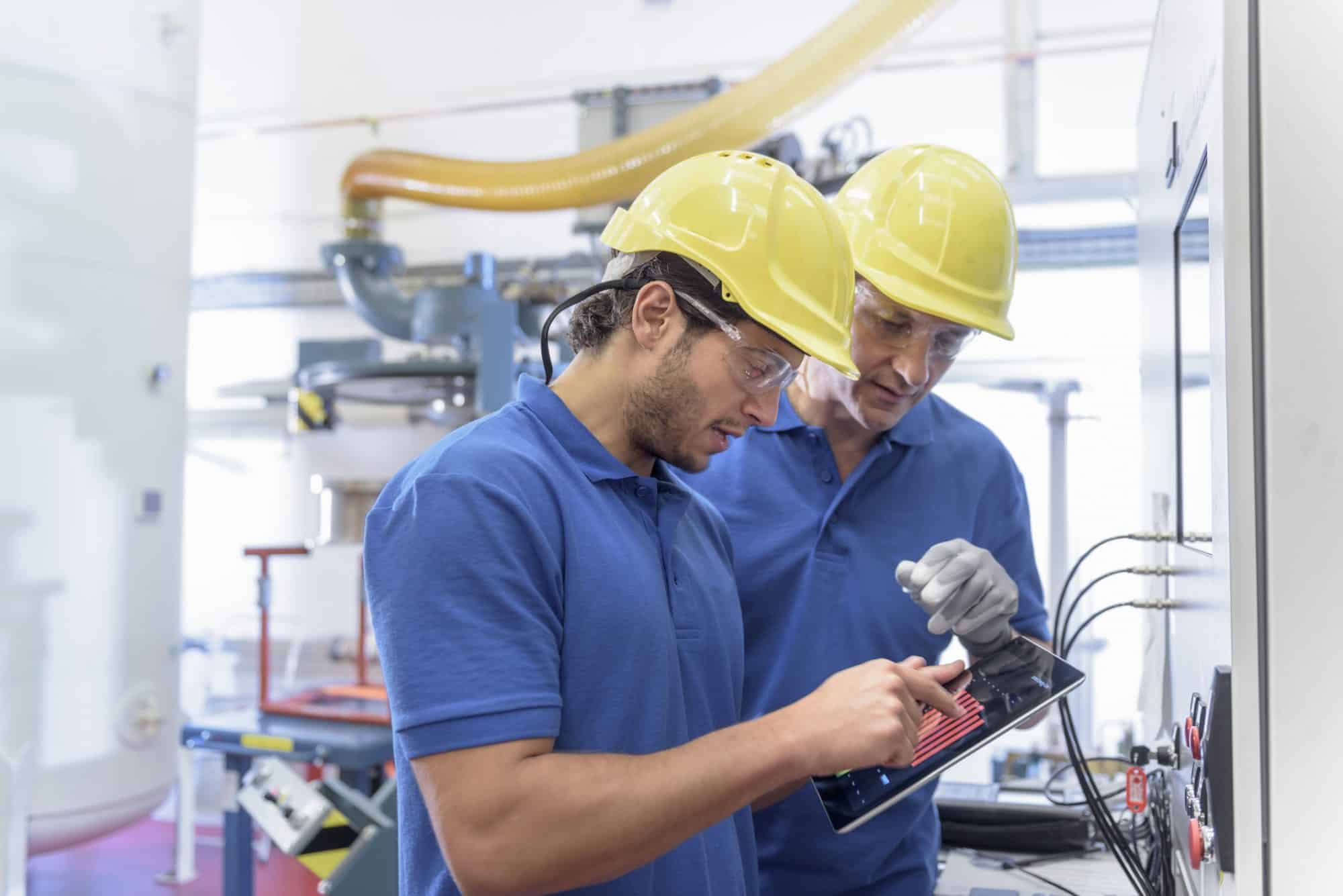
It’s time to think way outside the proverbial box, according to the Manufacturing Leadership Council, the NAM’s digital transformation arm. In fact, as we get closer to 2030, manufacturers are creating entirely new boxes—including new digital business models, products and services, revenue streams, ways to serve customers and opportunities to increase competitiveness.
Collaborative innovation: By 2030, metaverse technologies will provide rich virtual environments for the collaborative development of new ideas. These shared virtual spaces will enable contributors from multiple remote locations to collaborate in real time.
- These collaborations may include manufacturers, partners, academic institutions and research institutes.
- New concepts can be tested in a virtual world before moving to physical prototyping or production.
Outcome-based products and services: As digital platforms mature and products become increasingly smart and connected, the decade ahead may see a boom in more outcome-based services. This is where the customer doesn’t buy a physical product, but instead signs up to pay for the guaranteed outcomes that product or system delivers.
- This shift will require manufacturers to establish new infrastructure rich in predictive analytics, remote communications and consumption monitoring.
- It also requires a mindset change for traditional manufacturing, from a focus on units and costs to product lifecycles, performance levels and usage.
Blockchain networks: By 2030, blockchain could be leveraged for most world trade, helping to provide the secure traceability and provenance needed to prevent physical product counterfeiting, grey markets in medicines and even the adulteration of the global food supply chain.
- A blockchain is an electronically distributed ledger accessible to multiple users. Blockchains record, process and verify every transaction, making them safe, trusted, permanent and transparent.
- Blockchain technologies promise to be a viable solution to manufacturers’ need to automate, secure and accelerate the processing of key transactions across industrial ecosystems.
E-manufacturing marketplaces: Digitally empowered production-line adaptability, such as the kind that emerged during the pandemic, will provide a foundation for companies to offer spare production capacity to other companies in different sectors.
- This maximizes the return on a company’s production-line investments and can generate new revenue streams for the future.
- Combined with e-commerce, e-manufacturing will enable designers, engineers and/or smaller companies to more easily connect with a large pool of qualified producers to deliver and scale a final product.
Manufacturing in 2030 Project: New Boxes is just one of the industry trends and themes identified by the Manufacturing in 2030 Project, a future-focused initiative of the MLC. For more details on megatrends, industry trends and key themes for Manufacturing in 2030, download the MLC’s new white paper “The Next Phase of Digital Evolution.”
Top Manufacturing Tech Trends of 2022

Now that 2023 is here, we’re looking back on 2022’s top tech trends in manufacturing. The NAM’s digital transformation arm, the Manufacturing Leadership Council, and its innovation management division, the Innovation Research Interchange, gave us an overview.
AI everywhere: From automatically responding to shifts in production demand to anticipating breakdowns in the supply chain, artificial intelligence showed up more than ever before throughout manufacturing operations.
- More than two-thirds of manufacturers are either using AI now or will be doing so within two years, according to MLC research.
- Current use cases include predicting needed maintenance for equipment, forecasting product demand and monitoring performance metrics such as productivity and efficiency. Future use cases could include fully autonomous factories that run continuously with minimal human intervention.
Training on demand: Training for technicians and frontline operators used to mean time in a classroom with a live instructor. In 2022, more manufacturers turned to virtual, on-demand learning tools that allowed workers the freedom to learn at their own pace.
- This ran the gamut from video content libraries to immersive augmented reality/virtual reality experiences that guide and correct trainees.
- In 2023 and beyond, this type of learning experience will be essential to attracting and retaining younger workers who are familiar with digital learning and want the latitude to gain new skills on their own schedules.
Digital twins: Manufacturers used digital twins—virtual models designed to reflect a physical object, system or process accurately—to create design prototypes and test their performance.
- Digital twins will continue to allow for new levels of design optimization, improved product development and performance and significant waste reduction for manufacturers.
Robotic collaboration: Once confined to steel cages and bolted to floors, industrial robots took center stage in 2022.
- No longer limited to repetitive tasks and kept far from human workers, new-generation robots are safe enough to work alongside employees, can be moved quickly around shop floors and are programmed easily to do multiple tasks.
- Since they’ve also become more affordable, they’re an economically feasible investment for companies of all sizes.
Cybersecurity as safety: A rise in connected factories also meant a rise in cyberattacks on manufacturers. In an industrial setting, a cyberattack can be very dangerous, as it can cause equipment to malfunction.
- Last year, more companies began addressing the threat with cyber drills, tabletop exercises for simulated attacks and other training exercises designed to keep businesses—and workers—safe and secure.
Low-code/no-code development platforms: In 2022, more manufacturers embraced the use of mobile and web apps to build applications quickly. Using these platforms, enterprise and citizen developers can drag and drop application components and connect them to create apps—without line-by-line code writing.
- Business teams with no software development experience built and tested applications without any knowledge of programming languages, machine code or the development work behind a platform’s configurable components. We can expect to see more of it this year.
Smart glasses move beyond the pandemic: Many manufacturers kept up their pandemic-era use of smart glasses, which they had used to troubleshoot issues on the ground when travel was restricted and engineers and technicians couldn’t reach sites.
- They also expanded smart glasses’ use to include scanning sensor data so users can see visual data “mapped” onto equipment to better identify issues and fixes.
Interested in learning more? Check out the MLC and IRI for more insights into manufacturing’s exciting, high-tech future.
Sustainability Is a Top Manufacturer Priority, Survey Shows
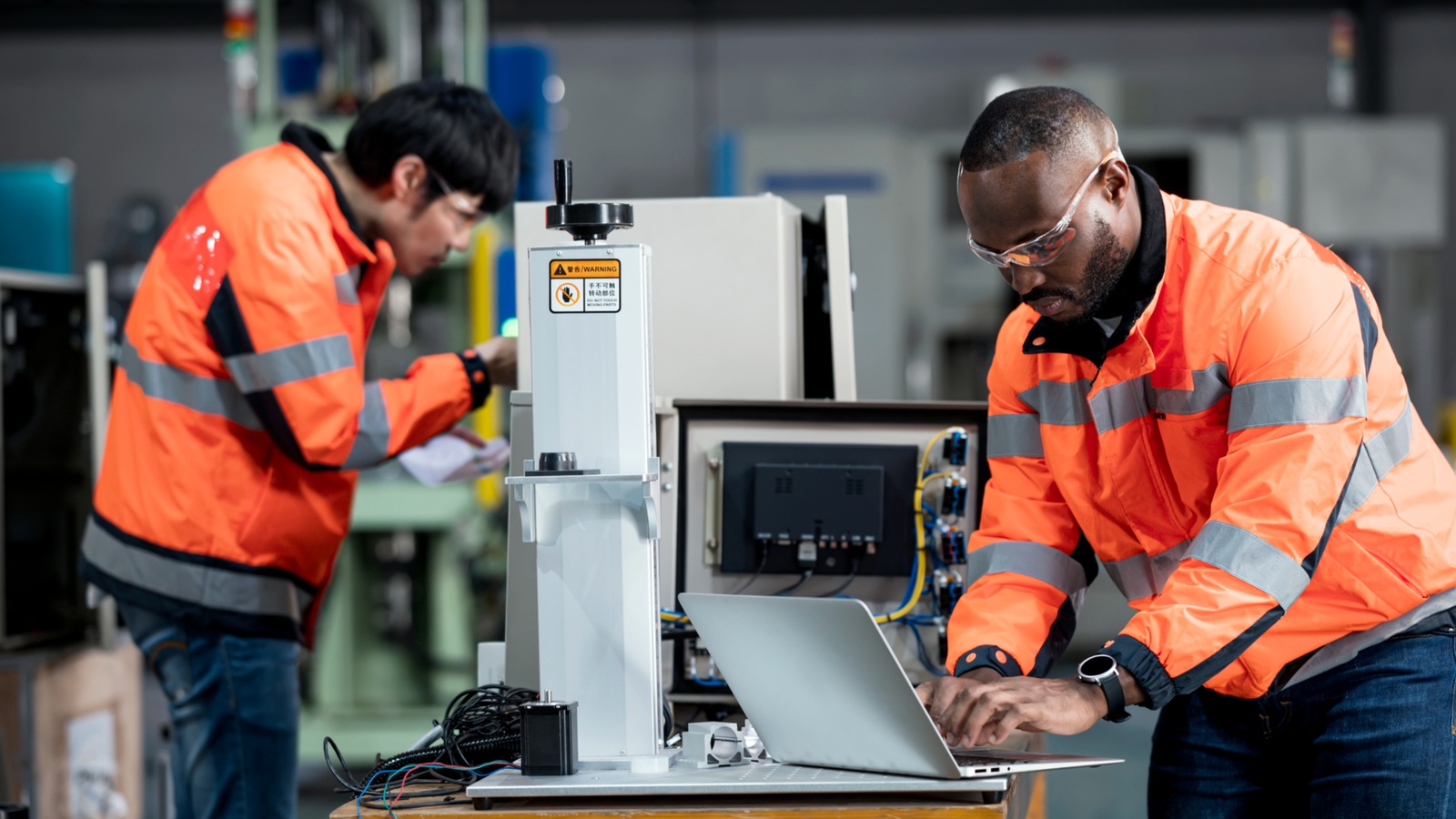
Manufacturers are pursuing sustainability like never before.
That’s according to recent polling conducted by the Manufacturing Leadership Council, the NAM’s digital transformation division. The annual Sustainability and the Circular Economy research survey seeks to determine the progress made in sustainable manufacturing.
Competitiveness: There has been a surge in the number of manufacturing executives who view sustainability as critical to the future of their businesses.
- 58% of respondents in 2022 believe sustainability is essential to future competitiveness compared to 38% in 2021.
- 68% of executives say they are implementing extensive, corporate-wide sustainability strategies. That’s up from just 39% in 2019.
What’s driving change: The motivations go beyond regulatory compliance and cost savings.
- 78% say sustainability is about better alignment with corporate values.
- 68% believe in creating a cleaner, healthier environment.
- 66% seek to improve company reputation with customers and investors.
Top corporate goals: More than half of survey respondents reported having specific sustainability goals and metrics across almost all key functions in the company.
- Goals were most apparent in manufacturing and production (79%), supply chain (69%) and product design and development (67%).
- Additional goals were cited in transportation and logistics (56%) and partner compliance (51%).
Energy efficiency is No. 1: The primary sustainability focus of manufacturers, according to survey results, is energy efficiency and reduction, combined with the transition to renewable energy sources. These efforts are linked intrinsically to meeting net-zero emissions goals.
- 45% of respondents report having announced formal net-zero goals.
- 30% aim to hit net zero by 2030.
Digital tech, employee training play a role: Also on the rise is the number of companies that recognize the importance of digital solutions in their sustainability efforts.
- These tools are being used to manage and monitor materials and energy consumption, optimize operations to improve efficiency and report sustainability progress.
- Respondents also say meeting sustainability targets must include engaging employees through education and training, as well as greening their supply chain.
The last word: An overwhelming 90% of all respondents agree that manufacturing has a special responsibility to society to become more sustainable and accelerate the transition to a future circular industrial economy.
Interested in putting some renewable energy solutions into action, including solar power, battery storage and LED lighting? Programs from utility companies and other entities enable efficiency upgrades with little or no upfront capital. Connect with NAM Energy to explore your options!
Manufacturing in 2030 Megatrend: Ride the Power Curve
Get the Latest News
Get involved
Digital manufacturing is built on just five “cornerstones”—and the work done in those areas in the next decade and beyond will largely determine the success or failure of key aspects of manufacturing’s technological future, according to the Manufacturing Leadership Council, the NAM’s digital transformation arm.
The MLC says that developments in electronics, computer systems, communications technologies, software and cyber infrastructure will have a direct impact on advancements made in human-machine interaction, automation and robotics, and autonomous operation. We break these down below:
Electronics: Intel predicts that by 2030 it will be able to incorporate 1 trillion transistors on a single semiconductor chip.
- Manufacturers will need that kind of power to enable computer systems and software to process much larger data volumes as they connect more plant equipment and people within their business ecosystems.
Computer systems: Manufacturers should expect a changing computer landscape as biological, physical and digital systems converge to offer more options.
- Quantum computing and nanocomputing offer potentially greater computational ability, which will allow manufacturers to process more data faster.
- Meanwhile, traditional computers will become lighter, thinner and more flexible. Different user interfaces, such as voice recognition, will progress.
Communications technologies: The years ahead will see manufacturers adopt 5G-based networks, which offer higher bandwidth and lower latency than prior technology.
- Communications technology suppliers are already working on 6G networks, expected to become commercially available in 2030.
Software: Next-generation software applications, in addition to web and mobile capabilities, will support voice, wearables, touch and AR/VR to a greater extent than ever before.
- These applications will be driven increasingly by artificial intelligence.
Cyber infrastructure: The cyber infrastructure that has been in development for the past two decades has allowed for separation between data and physical computing sources (i.e., cloud computing.)
- Looking ahead, an infrastructure that brings together data from all sources with business and technology tools will facilitate innovation, R&D, operating models and business growth.
Manufacturing in 2030 Project: Ride the Power Curve is just one of the megatrends identified by the Manufacturing in 2030 Project, a future-focused initiative of the MLC. For details on more megatrends, industry trends and key themes for Manufacturing in 2030, download the MLC’s new white paper “The Next Phase of Digital Evolution.”
Manufacturers Keep Pace with Technology Deployment
Get the Latest News
Get involved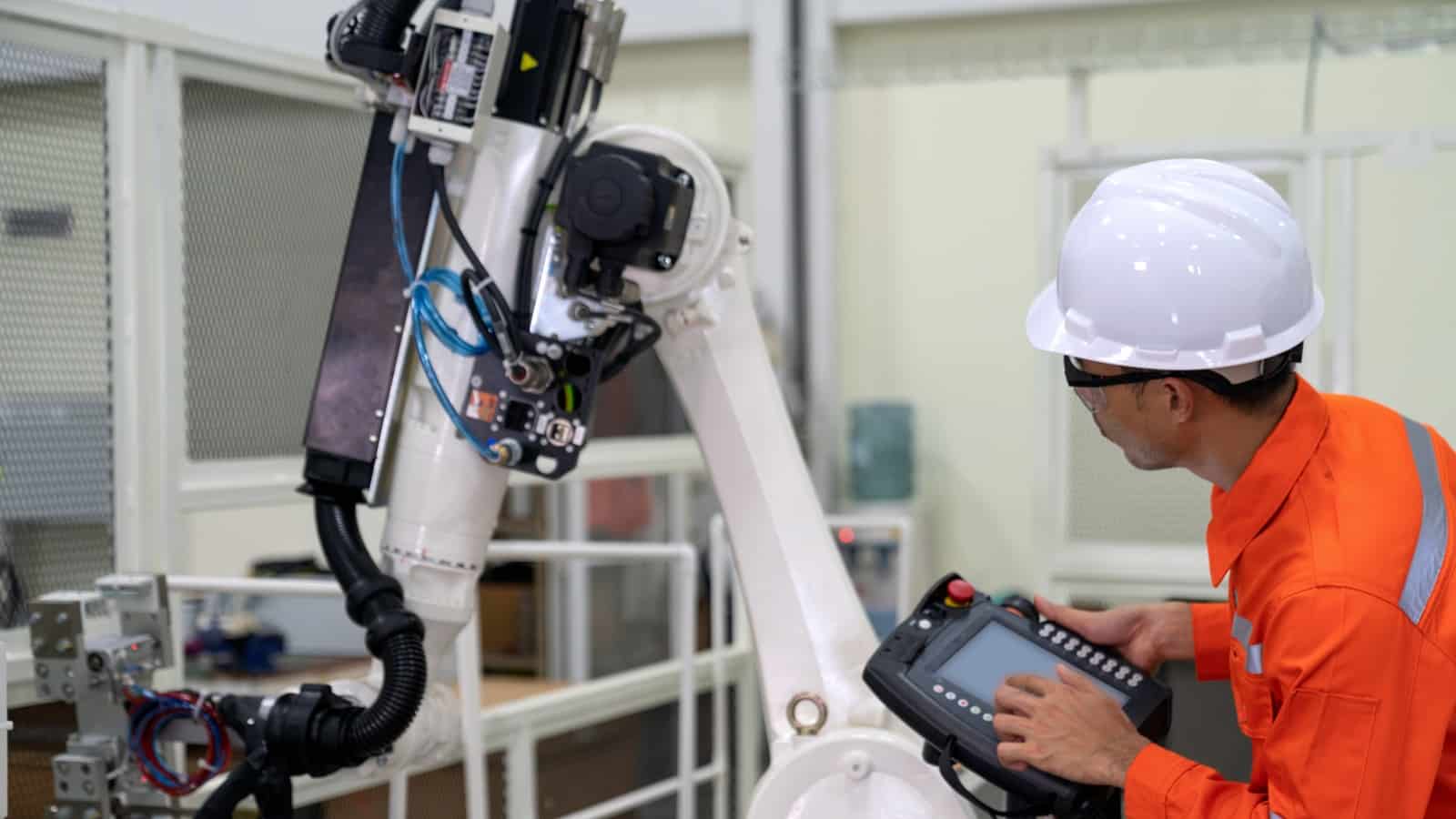
Manufacturers are staying on top of the tech game.
That was among the chief findings of a new polling conducted by the Manufacturing Leadership Council, the NAM’s digital transformation division. The annual Transformative Technologies in Manufacturing research survey aims to reveal data on current realities and expectations for manufacturing in the near future and in the years to come.
Rate of adoption: The most surprising data point was that 89% of respondents said they expect their company’s rate of adoption of disruptive technologies to increase over the next two years. That figure is up from 51% just one year ago.
Why disruptive technology? Reducing costs and improving operational efficiency were the most-cited reasons for investing in digital tech, with 83% of respondents identifying these as important motivations.
- Improving operational visibility and responsiveness came in second, at 61%.
- Other reasons include increasing digitization (40%), creating a competitive advantage (36%) and improving quality (30%).
Top near-future trends: Digital-twin modeling and simulation software, augmented and virtual reality, high-performance computing and further investments in supply chain management software will lead the next wave of investments during the coming year or two.
Not of interest: The survey found that quantum computing and blockchain technology are currently of the least interest to manufacturers.
The role of AI and ML: Artificial intelligence and machine learning usage continues to grow among manufacturers.
- Nearly 50% of respondents indicated that their companies have implemented AI, either on a single-project basis (40%) or in all factories (9%).
- About 75% said they are applying AI and ML to reduce costs and improve productivity and processes.
- Approximately 60% indicated they had used AI and ML for preventative/predictive maintenance or quality improvement.
Misunderstood metaverse: A new topic covered by this year’s survey, the manufacturing metaverse, was perhaps the least understood by respondents.
- About 38% said they were still trying to understand the technology and concept, 20% said they have no plans to adopt a manufacturing metaverse approach and 15% said they didn’t know how to respond to the question.
The last word: “Manufacturers are finding more use cases and business benefits for increasing their use of digital technology, and the pace of adoption is accelerating,” said MLC Co-Founder and Vice President and Executive Director David R. Brousell.
- “The research confirms that manufacturing is headed for an agile, connected and collaborative future driven by technology and fueled by innovation.”
A Winning Formula at AB InBev
Get the Latest News
Get involved
Anheuser-Busch InBev recently got to raise a toast to its team members—not just once, but four times.
After being named a 2022 Manufacturing Leadership Awards Gala winner in three categories—AI and Machine Learning, Digital Network Connectivity and Operational Excellence—the company took home the ultimate prize: the MLC’s Large Enterprise Manufacturer of the Year. (The MLC is the NAM’s digital transformation partner.)
Recipe for success: What’s brewing in AB InBev’s recipe for success? According to Global Vice President of Engineering and Operations Marcelo Ribeiro, a focus on world-class performance in all of the company’s operations.
- This means leveraging disruptive technologies and empowering frontline teams to drive sustainable and reliable performance, all with the dream of “to create a future with more cheers.”
Utilizing AI: One of AB InBev’s award-winning projects was its innovative use of AI to improve utilities performance. The company implemented a set of smart algorithms to optimize the performance of its air compressors and boilers, giving managers and operators a real-time, utilities-performance dashboard that alerted them when a target was not being hit.
- Started as a pilot in just five breweries, the project was so successful, the company rolled it out to more than 30 other breweries worldwide.
- AB InBev plans to expand the algorithm beyond boilers and compressors to provide utilities usage forecasts and prediction models.
Preventing downtime: Another AB InBev winner was the firm’s approach to attaining 100% reliability and optimization of all equipment and processes. This led to the development of a tool that monitors equipment performance and prescribes maintenance actions, both of which minimize downtime.
- The company’s ambitious reliability goal also creates safer working conditions in breweries and maximizes sustainability by reducing consumption of raw materials, packaging and spare parts.
Lessons on digital transformation: While technology can provide solutions to problems, resist the urge to simply “do” technology for technology’s sake, Ribeiro cautioned. First identify a problem, then determine how technology can help fix it. Don’t work the other way around.
- “One thing we have learned in recent years is that future is becoming less predictable,” Ribeiro said. “Manufacturing needs to create an ecosystem in the future where we can learn from each other. And we have to actually enable that to happen as becoming more resilient will require building a collaborative ecosystem.”
Nominations are being accepted now for the 2023 Manufacturing Leadership Awards. Find complete details here.
What’s the Next Phase of Digital Evolution?
Get the Latest News
Sign up here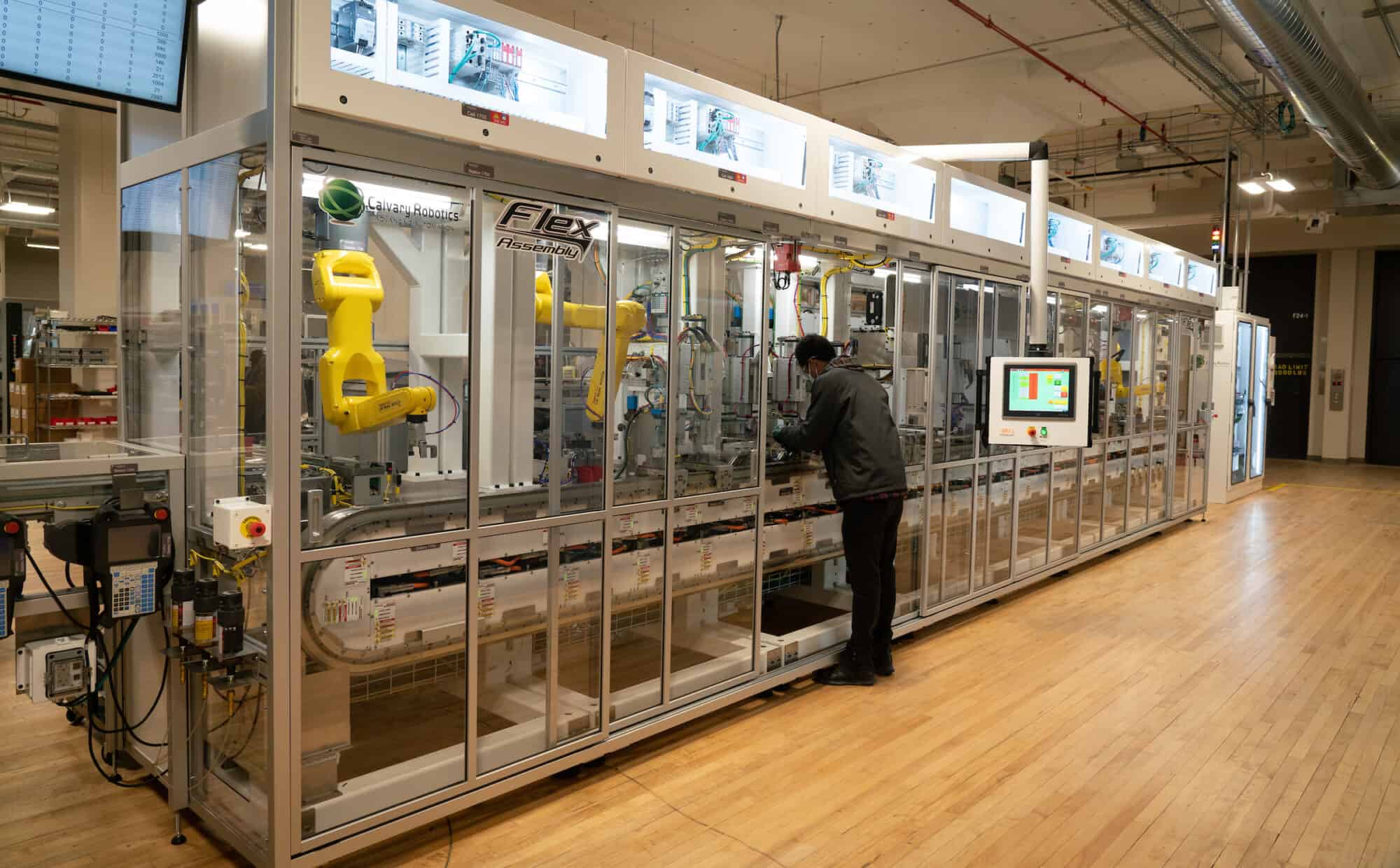
In late 2021, the Manufacturing Leadership Council launched the Manufacturing in 2030 Project, a comprehensive examination of the factors that will influence the industry leading up to the year 2030 and beyond. The latest milestone in this sweeping project is the release of The Next Phase of Digital Evolution.
This groundbreaking white paper examines the global megatrends like population, the economy, sustainability demands, and technology development – all of which will impact business decisions and are essential for manufacturing competitiveness.
Data’s Growing Role: Data is perhaps manufacturing’s most important asset, tracking everything from individual machine performance to the status of global supply chains. Developments in digital systems for factories, high-powered industrial networks and advanced communication technologies are giving rise to the ability to collect data.
Combined with a rise in analytics capabilities, manufacturers are now able to apply that data in powerful ways to improve processes, speed innovation, find new business opportunities and ultimately create conditions for greater competitiveness.
A Rising Middle Class: Population trends will influence where manufacturers build new factories, who they hire, the products that they make, organization for supply chains and who they are selling to.
Africa and Asia are projected to have the strongest population growth, and while traditional middle-class markets in the U.S., Europe and Japan are expected to grow at only modest rates, 88% of the next billion entrants into the middle class will be from Africa.
What’s to Come: Manufacturers will also need to consider their role in creating sustainable business practices and how they will overcome persistent workforce challenges. Institutional investors are pressuring businesses to significantly improve environmental practices, while the already yawning gap in skilled workers is expected to skyrocket to 2.1 million unfilled openings by 2030.
Technology could have a role in solving both of those issues. On the sustainability front, data can be key to monitoring emissions, utility consumption and waste, while also giving rise to new processes that improve on those metrics. For the workforce, data can empower workers to make more informed decisions, automation can eliminate repetitive tasks, and technologies like augmented and virtual reality can enhance training and upskilling.
To learn more about these and other insights, download the full white paper here.
Lincoln Electric Tour Showcases Innovation
Get the Latest News
Get involved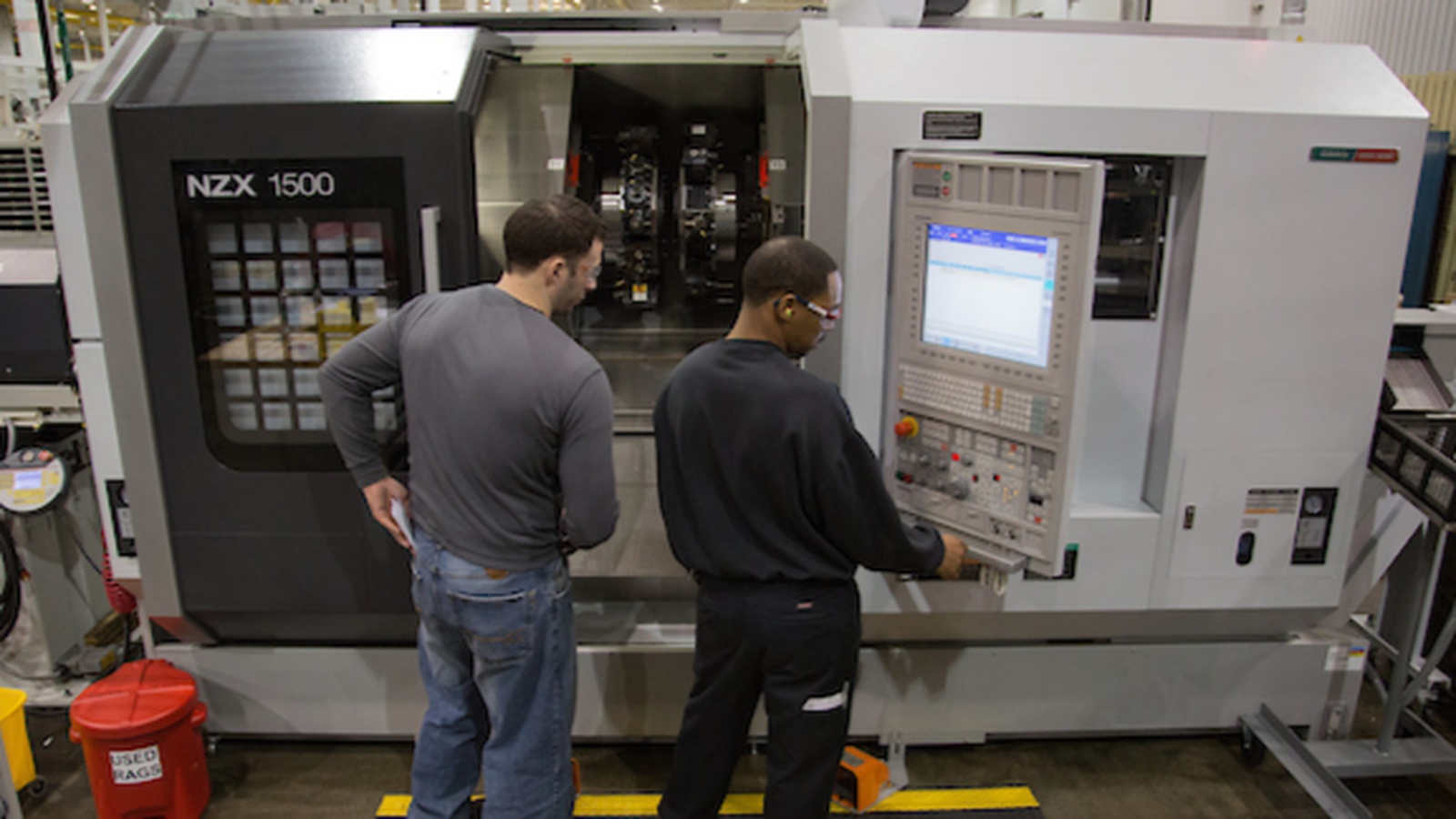
A word of caution about the Manufacturing Leadership Council’s plant tours: Attending one could make you rethink your manufacturing operations.
Inspiration abounds: The MLC, the digital transformation arm of the NAM, recently hosted a plant tour of Lincoln Electric’s headquarters in Cleveland. Inspired by the innovation on display, one attendee vowed “to go back to my own company and start asking what’s stopping us from implementing similar technologies and practices.”
- The two-day Lincoln Electric event included visits to the company’s welding and training center, its machine division, its 3D printing facility and its automation-solutions center.
- Tour participants also learned how the business is overcoming workforce shortages through culture and technology solutions.
What is Lincoln Electric? Lincoln Electric was founded in 1895 as an electric-motors manufacturer. Today it is a global industry leader in welding equipment and consumables, additive manufacturing and automation solutions. The company has locations in 19 countries and serves customers in more than 160.
Welding school: The first stop on the tour was Lincoln Electric’s world-class welding school, first opened in 1917 and relaunched in 2018 as the 130,000-square-foot Welding Technology & Training Center.
- Students at this state-of-the-art facility begin their training at virtual welding stations before moving to one of 150 training booths to use the real “arc.”
- Lincoln Electric also offers virtual classes, a turnkey curriculum for customers and “train the trainer” courses for welding instructors.
3D printing: Tour participants also got a look at the company’s Additive Solutions Center, the largest platform of its kind, which boasts 18 3D printing cells. It serves customers in the automotive, aerospace, marine and energy industries.
- The equipment prints replacement parts, molds, tooling and prototypes measuring up to eight feet long and weighing more than 8,000 pounds.
- It can print in a variety of metals, including mild steel, stainless steel, nickel alloys, bronze and Inconel.
Automation solutions: The Automation Solutions Center tour stop demonstrated Lincoln Electric’s twin answers to the manufacturing skills gap: innovation and tech solutions that increase productivity.
- The technology on offer includes automated arc welding products, collaborative robots, metal fabrication and assembly line solutions.
- Demand for Lincoln Electric’s collaborative robots is up as manufacturers cope with workforce shortages, tour participants learned.
High-performance culture: Tour attendees also learned about Lincoln Electric’s high-performance culture, which rewards success and provides employees with opportunities for growth and development.
- The company’s Incentive Management System for the production workforce includes output-based pay to maximize personal earnings potential, an annual profit-sharing bonus, a no-layoffs policy and an open-door policy.
- “I found the networking time to be highly valuable and came away with several ideas on employee retention,” said a tour participant.
Future focus: Looking ahead, Lincoln Electric leadership said the company’s core focus must and will be on its people—to continue to build a pipeline of talent and attract and develop the next generation of leaders.
